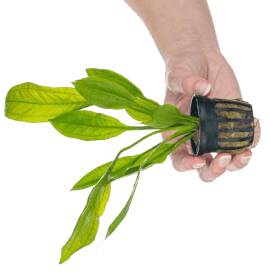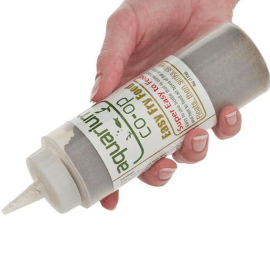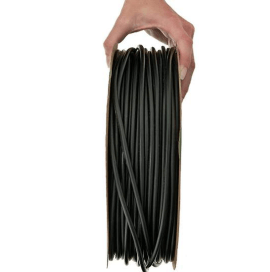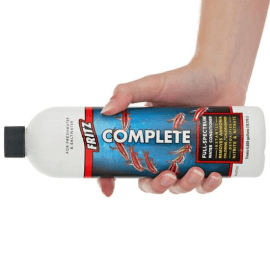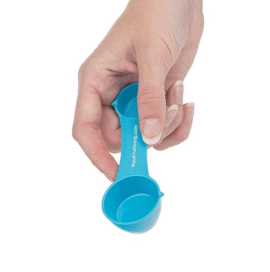How to Care for Aquarium Fish While on Vacation
When going out of town, it can be stressful trying to arrange care for your pets. Thankfully, aquarium fish are generally on the easier side of care requirements because you don’t need to walk them, let them out to use the restroom, or even feed them every day. Here are four methods we recommend for ensuring your fish stay happy and healthy while you’re away.
Before You Leave…
Give your fish tank a good cleaning a couple of days before your departure. Do a partial water change, vacuum the substrate with an aquarium siphon, and clean the filter if needed. The tank maintenance is completed 48 hours in advance so that you have time afterwards to observe the fish and make sure everything’s working well before you leave. For example, some fish keepers have rushed their water changes at the last minute and then forgotten a tiny detail – like turning on the filter again – thus leaving their fish in a precarious situation while on vacation.

Clean your aquarium a day or two before leaving so you have time to make sure your fish, water parameters, and equipment are all doing well.
Method 1: Don’t Feed Your Fish
If you’re only leaving for a week or less, the easiest method is to not feed your fish. This may sound harsh, but remember that in the wild, fish must find their own food and are not guaranteed a meal every day. If your fish are healthy to begin with, they are equipped to go without eating for a week or even more, depending on the species.
As part of the regular quarantine process in our fish store, we have a decade of experience treating thousands of fish with preventative medications and no feedings for seven days in a row. The corner cases where this method should not be used are if a) you are raising baby fish that require daily meals, b) your fish are not completely healthy and need regular feedings to help with the recovery process, or c) you will be gone for more than a week.
Method 2: Set up an Auto Feeder
If your situation fits one of those special cases, then an automatic fish food dispenser is your best friend. Load the feeder with flakes or pellets, program what times you want it to feed each day, and mount it on the rim of the aquarium. Make sure to test the feeder several days before your departure to confirm that it’s working properly and the amount of food it’s dropping is appropriate. In general, we recommend only feeding just enough food to get them through your trip, since heavy meals result in more fish waste building up while you’re gone.

The Aquarium Co-Op Auto Feeder allows you to feed up to 4 times a day and comes with a rechargeable battery that lasts up to 3-6 months per charge.
Method 3: Find a Pet Sitter
Asking friends, family members, or a hired pet sitter to watch your fish has both pros and cons. The advantage is that your pet sitter can let you know if the fish are unwell and send you pictures and video to help with troubleshooting. Also, they might be able to do tank maintenance and water top-offs if necessary. However, not all pet sitters are well-versed with aquariums, so they can sometimes end up doing more harm than good.
A common problem is overfeeding because the pet sitter feels like “the fish looked hungry,” which results in poor water quality and potentially loss of life. One solution is to use a pill box filled with the right measurements of food for each day. Just remind the pet sitter that if they accidentally miss a day (or more), do not try to make up for it by feeding excess food from those previous days. The fish usually cannot finish all the extra meals, so the surplus of flakes just ends up polluting the water. Instead, skip the past containers and only feed the food assigned for the remaining days.

Frozen foods can be used instead of fish flakes and pellets, since they often come in cubes that are easy to measure out for each tank.
Asking your pet sitter to fed frozen foods instead of dry foods is a great alternative, since it is a “cleaner” food that won’t dirty the water as easily and the fish rarely leave any leftovers. To make things easier, you can label the fish tanks so that your pet sitter knows how many cubes of frozen food to feed each aquarium.
Method 4: Use Live Foods for Picky Eaters
What if you will be gone for more than a week, there’s no way to hire a pet sitter, and your picky fish won’t eat pellet foods from an auto feeder? Your options are fairly limited, but we still have some suggestions that might work. If your fish will only take a live or frozen diet, you can seed the tank with live freshwater foods such as blackworms, daphnia, scuds, and snails. In order to make the live foods last longer, consider putting them in a floating plastic container with a hole small enough that the fish can’t get inside, but the food can slowly crawl or swim out over time.

Daphnia are tiny swimming crustaceans that are often used as live foods for feeding fry and smaller fish.
You may notice that we did not recommend using vacation feeder blocks or other time release banquet blocks. While they may be appropriate for adding more calcium to the diet of your fish and invertebrates, they have the tendency to cause ammonia spikes and algae blooms when used during vacations because they often dissolve into a mess of tiny particles that larger fish can’t eat.
Hopefully, you found one of these four methods helpful as you get ready for your next holiday or business trip. Safe travels and happy fish keeping!
